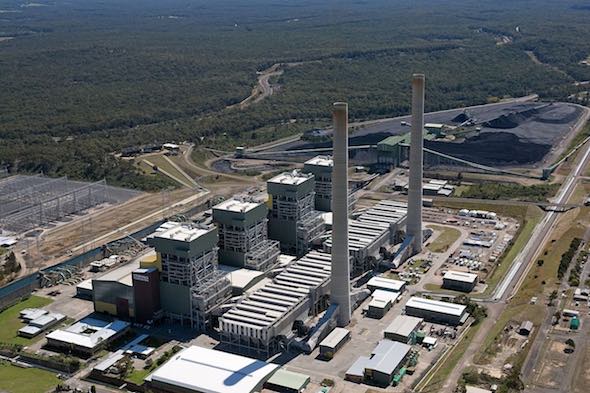The independent expert looking at the proposed $18.7 billion takeover of Origin Energy has damped expectations of a meaningful extension of the country’s biggest coal generator, saying it would be little value to the company itself.
Grant Samuel’s 283-page study of Origin’s finances and prospects contains numerous references to Eraring, but no specific valuation of the 2.88GW facility beyond its planned closure date of August, 2025, despite talks of an extension with the NSW government.
Grant Samuel says any extension of Eraring is likely to be for a limited period only, and won’t deliver any windfall gains for Origin, given its coal supply challenges, the end of the coal price cap next year, and an anticipated jump in the price of coal in 2025, as well as an expected fall in electricity tariffs.
“An extension of Eraring is not explicitly included in the NPV outcomes but, in any event, is unlikely to be a major contributor to the overall value of Energy Markets,” the report says.
“While some market and political commentators have cited estimates of up to $3 billion of government support, these figures appear to solely represent the operating costs (i.e. fuel and operating costs) but exclude the net impact of revenue generated from its operations.
“At the same time, the New South Wales Energy Minister has also stated that any negotiations for government support should “start at zero and go from there”.
“The reality is that any incremental value is unknown but will be constrained by the limited window (potentially around two or three years) and on commercial terms that, in Grant Samuel’s view, are unlikely to promise windfall profits to Origin.”
The observation from Grant Samuel are interesting in the light of the ongoing debate about the future of Eraring, and whether the NSW government can somehow convince Origin to keep a couple of units open for another two summers.
Origin clearly sees little value in keeping the plant open, given the coal supply problems, its emerging problems with the ash dam at the site, and on consumer expectations.
The 2025 closure date flagged by Origin in 2022 was not final, but it is clear it was only ever to be extended with the help of generous government support, and that is unlikely to happen if the state can see a way round reliability issues by fast-tracking other wind, solar and storage projects, as it appears to be trying to do.
Grant Samuel’s report notes that the coal price cap expires in June, 2024 and an (anticipated) $30 per tonne increase in the coal price would reduce Origin’s earnings by more than $150 million in FY25.
“The earnings from Eraring will cease after FY25 unless operations are extended through agreement with the New South Wales Government,” the report notes. “Even if that occurs, it will only be extended for a limited period.”
Origin is targeting to have at least 4GW of renewable generation and storage capacity by 2030, the report notes – in contrast to bidder Brookfield’s plans for build 12GW of new wind, solar and storage over the next decade.
The Grant Samuel report provides some insight into the status of some of these projects, identifying where the various solar and battery storage projects are up to (see table above).
Origin has four big batteries at advanced stages of planning, including the first 460 MW, 920 MWh stage of the Eraring battery, with the 80MW, two hour battery at Morgan in South Australia likely to be the next to move. That project is located next to a planned 250MW solar farm.
Another major battery is proposed at the site of its Darling Downs gas generator, with a 500MW, four hour (2000 MWh) storage project on the drawing board.
There are another four solar projects in the development pipeline, with the most advanced, and biggest, being the 450 MW Yarrabee solar project near Narrandera in NSW, and another sizeable 250 MW Dapper solar project near Dunedoo in NSW.
The Grant Samuel report notes that Origin is in a better position than AGL, which still sources 80 per cent of its electricity production from coal-fired power.
It says that because of this, AGL faces much high maintenance capital costs of around $500 million a year, substantially higher rehabilitation costs and a “monumental” challenge to develop a pipeline of renewable projects to replace its coal-fired power generation capacity.










